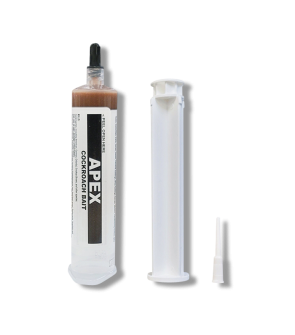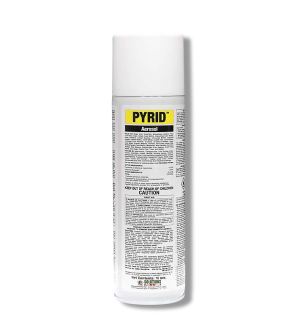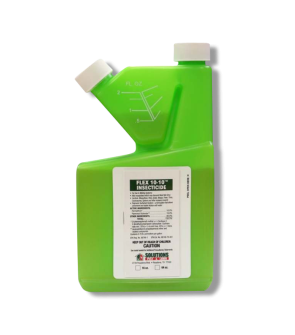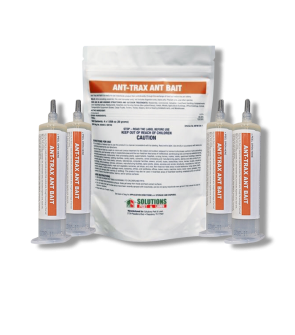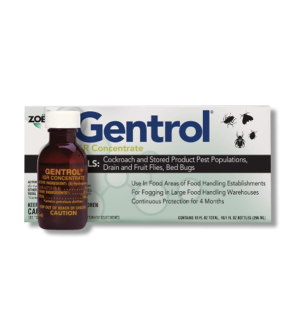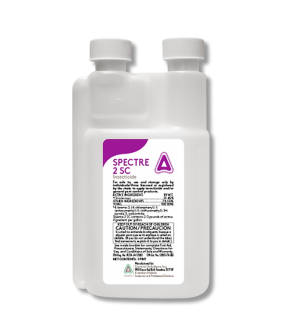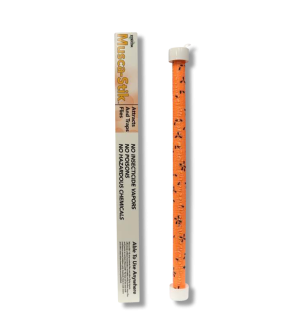Insects in Hospital
Most Effective Products
Common Insects in Hospitals
Good pest control goes hand in hand with good health care and safety of patients in a hospital setting. Common pests that invade hospitals are pharaoh ants, bed bugs, cockroaches, and flies. These pests pose a number of risks to vulnerable patients, staff, and medical equipment.
Which is why it's important to keep hospitals protected from these pests. It takes year-round preventative control and daily sanitization management to protect individuals who interact with various parts of hospitals.
With so many people coming and going to your hospital, these pests can be a serious issue. All the better to quickly implement proper pest and sanitation management by implementing the state and hospital regulations, and some other suggestions throughout this DIY guide.
All state and medical board policies must be followed in regards to pest management in hospitals or medical settings.
Keep in mind that standard state, federal, and medical regulations will still need to be followed when conducting any type of pesticide treatment in your region.
If you are not seeing a pest listed here then contact our customer service by phone, email, and in-person at one of our physical store locations for professional recommendations.
Pharaoh Ants
Pharaoh ants are huge problems in hospitals due to their small size, enabling them to travel anywhere and their ability to separate into multiple colonies. Once inside, they contaminate sterile materials with possible harmful bacteria and feed on patient wounds.
Identification
Pharaoh ants are small ants reaching about 1/16th of an inch long. Typically they are yellow to a light reddish-brown in color and have dark to black abdomens.
Inspection

In hospitals, pharaoh ants are found I.V. tubing, glucose solutions, maternity incubators, flower arrangements, rubber goods, and voids of floors, walls, and ceilings.
Treatment
Step 1: Use Ant Baits

Pharaoh ants have multiple queens and colonies so using an ant bait would be best to kill the entire population.
Ant-Trax Ant Bait is a sweet gel bait that works slowly to control pharaoh ants and other ant species in hospitals.
Determine how much Ant-Trax Ant Bait to use by measuring the square footage of the treatment area. To do this, measure the length and width of the treatment area in feet and multiply them together (length X width = square footage).
Apply 0.006 oz. (4 drops) of Ant-Trax Ant Bait per square yard.
Place this product under baseboards, sinks, countertops, around water pipes, water heaters, dishwashers equipment, and in cracks and crevices as well as voids where ants harbors.
Do not apply to areas where people and pets can contact them.
Step 2: Apply Spectre 2 SC
 Use a non-repellent insecticide on the outside of your hospital. Using any type of repellents can cause pharaoh ants to become stressed and split their colonies further into other areas.
Use a non-repellent insecticide on the outside of your hospital. Using any type of repellents can cause pharaoh ants to become stressed and split their colonies further into other areas.
Spectre 2 SC is a professional non-repellent insecticide that kills a variety of pests like pharaoh ants from hospitals. When dried, this product will create a 4 month residual to continue to repel and eliminate pests.
Use 1.5 fl. oz. of Spectre 2 SC with 1 gallon of finished dilution at 0.25% concentration.
Mix and apply this product with a handheld pump sprayer.
Spray 3 feet up the hospital exterior wall structure and 3 feet out on the ground next to it. Spray around window and door frames, and cracks and crevices in wall.
Remove patients before treating areas and wait until treated areas dry before allowing patients to contact these sites.
Bed Bugs
With the steady stream of people coming through hospitals from patients, paramedics, and staff make it a prime target for bed bugs. People who have infestations at home may unknowingly bring them in on clothing or suitcases. Paramedics coming from a patient's infested home can bring these pests.
Infestations of bed bugs spread quickly and with the multitude of tight spaces allows these pests to hide and breed easily. Bed-ridden patients are most exposed to biting activities of bed bugs and cause severe reactions for some individuals.
Identification
 Bed bugs are wingless, reddish-brown colored pests that are about 5 to 7 mm in length. They may be flat if they haven't ingested blood yet. After feeding, they can elongate in shape like that of a balloon.
Bed bugs are wingless, reddish-brown colored pests that are about 5 to 7 mm in length. They may be flat if they haven't ingested blood yet. After feeding, they can elongate in shape like that of a balloon.
Inspection

Treatment
Step 1: Clean

For a building like a hospital follow standard cleaning procedures and clean linen, bed sheets, patient gowns, curtains, and other cloth or fabric materials from infested rooms on a high heat setting in washer and dryer.
Vacuum the entire room and disassemble furniture to clean joints and junctures accurately.
Do not move equipment and other objects from infested rooms to other parts of your hospital as this can spread the infestation further. Leave all objects in their original place until bed bugs are controlled.
Step 2: Apply Insecticides

Flex 10-10 Insecticide is a synthetic pyrethroid insecticide that will provide a quick knockdown of bed bugs in hospitals. Gentrol IGR Concentrate will stop immature stages of bed bugs from growing into adults and perish before adulthood.
Both of these products will need to be applied with a handheld pump sprayer.
First, apply only with Flex 10-10 Insecticide on the mattress because Gentrol IGR cannot be applied on mattresses.
Under normal conditions, 3.2 fl. oz. of Flex 10-10 Insecticide in a gallon of water to treat 1,000 sq. ft. If you have a severe bed bug Infestation, use 6.4 fl. oz. of product per gallon of water.
When you are done mixing, apply the Flex 10-10 Insecticide as a light spray to the mattress, making sure to focus in on the tufts, edges, seams and folds.
After spraying the mattress with Flex 10-10 Insecticide, you can then add 1 oz. of Gentrol IGR Concentrate per gallon to the Flex 10-10 solution to treat 1,500 sq. ft.
Use the combination of Flex 10-10 and Gentrol IGR Concentrate on the bed frame, box spring, furniture, closets, flooring and all along the baseboards of the room.
Keep people and pets out of treated areas until the spray has dried and bedding has been washed.
Step 3: Treat Cracks and Crevices

Pyrid Insecticide Aerosol is a ready to use botanical insecticide that kills pests like bed bugs on contact and flushes them out of tight spaces with one application.
To use this product, you will need to replace the white actuator with the red straw applicator.
Inject the end of the straw into cracks and crevices of bed frames, headboard, boxspring, baseboard, and furniture.
When bed bugs are found in upholstered furniture, apply only to the infested tufts, seams, folds, and edges and underneath all areas. Do not apply to flat surfaces where human contact will occur.
Do not use Pyrid Insecticide Aerosol in patient rooms of hospitals for treatment of bed bugs.
Reapply this product every 7 to 10 days, as needed, until infestation is eliminated.
Cockroaches
Cockroaches are feared because they travel through pipes and eat on fecal matter from other roaches and on garbage.
The issue here is that these pests can spread harmful pathogens on surfaces contacted by patients with declining health.
Many roaches can find their way into hospitals, but the most common one is the German cockroach.
Identification
German cockroaches are light brown, tan, to almost black in color and measure about 1/2 an inch in length. Their most distinguished trait is the dark parallel lines on their head.
Inspection

They will hide under appliances, boxes, cabinets, drawers, shelves, computers, sinks, furniture, medical equipment, or in walls with voids, cracks, or crevices.
Treatment
Step 1: Sanitize

Follow your standard hospital cleaning protocols. Keep in mind that simply vacuuming and mopping of floors as well as wiping off surfaces will go a long way against these pests.
Waiting rooms with furniture will need to have all tufts, edges, and crevices thoroughly vacuumed and cleaned. Patients or visitors commonly shove or eat on these sites so they are prone to roach activity.
German cockroaches also love to invade laundry areas due to the amount of warmth and moisture. Dry wet cloth materials as soon as possible and make the necessary repairs to any leakage in pipes.
Wipe off stagnant water gathering on walls, floors, corners of rooms, and under piping.
Dispose of trash each day as these odors and remnants can help attract German roaches. Might be best to replace open trash bins with sealable containers.
Take trash out an outside dumpster that is several feet away from the building foundation. Close the lid when trash has been tossed out.
Step 2: Use Roach Baits

Roach gel baits would be best to avoid less mess and possible contact by guests.
Apex Cockroach Gel Bait is slow-kill bait so that German roaches and other roach species can have time to return to the nest and spread the lethal bait to other pests. This product is formulated with 11 different attractants for guaranteed roach feeding and control.
Apply 0.0047 oz. (3 drops) of Apex Cockroach Gel Bait per square yard to control German roaches in hospitals.
Keep in mind that it is best to leave multiple small placements throughout the treatment area rather than one large placement.
To avoid possible staining and easy removal you can place this product on an index card. Set this product around appliances that generate heat or moisture, or under furniture.
Also treat under baseboards, sinks, countertops, around water pipes, and in other voids as a crack and crevice treatment.
For either application method used, this product will need to be placed in areas that are inaccessible to children and pets.
Allow for 3 to 5 days to pass by for the product to take effect. Be sure to monitor your placements and replace when necessary.
Flies
Flies buzzing around patient and surgical rooms in hospitals is definitely something to be concerned about.
Many flies carry or spread harmful bacteria that could pose a risk to patients. In some cases, it is enough to decline the health of patients further. Most common flies to find in hospitals are house flies, drain flies, and fruit flies.
Identification
For a visual aid look at the image above: On the left is the house fly, the middle is the drain fly, and the one on the left is the fruit fly.
House flies are gray to black colored pests with four dark stripes down the thorax. In size they are between 1/4th of an inch long.
Drain flies are grayish-brown or tan colored pests that have a unique vein-like pattern on their wings and moth-like fuzz over their entire body. They measure about 1/8 of an inch.
Fruit flies are tan colored pests that have a gray color underneath their abdomen and black on top. The most noticeable feature of these pests are its bright and bugged out red eyes. They are smaller than house flies at 1/8th of an inch in length including the wings.
Inspection
Flies will stay near areas that have water and decaying organic matter, which in hospitals would be sink drains, floor drains, cafeterias, kitchens, nurse stations, break rooms, locker rooms, trashcans, laundry rooms, patient rooms, and bathrooms.
Treatment
Step 1: Proper Cleaning

To do this you will need to take out any organic waste in rooms and trash cans to a proper disposal site. Make sure any indoor recycle or garbage bins have closeable lids and are checked each day.
Take trash from garbage cans to an outdoor dumpster that is several feet away from the structure's foundation. When done, close the lid to deter flies and breeding activity.
Eliminate any moisture indoors on walls, floors, corners of rooms, and around pipes. Any water leakage around pipes should be properly replaced.
Step 2: Install Fly Traps
A non-lethal fly trap should be installed indoors to control flies in sensitive areas.
For all general flies, install the Musca-Stik. Musca-Stik is a non-toxic sticky fly trap that lures flies by pheromone scent and visually with its orange colored paper.
You may hang Musca-Stik from ceilings or lay it on flat surfaces that are out of reach of children and pets. To use, simply open the included packet and sprinkle it across the length of the product or into the end-cap.
Key Takeaways
Common Bugs to Invade Hospitals
- The most common pests to infest the inside of hospitals are ants, bed bugs, cockroaches, and flies.
Can Bed Bugs Be on Hospitals Beds
- Yes, bed bugs can appear under and around hospital beds because a large number of people lay in hospital rooms. They can also appear in these sites on patients, family members, visiting friends, doctors, nurses, or paramedics traveling from infested homes or buildings.
How to Keep Hospitals From Getting Bugs
- Regular sanitization and on-going insecticide treatments both indoors and outdoors will be needed to keep bugs away from hospitals.






